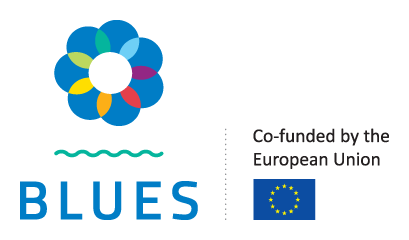
Elisabeth Bolund, Örjan Östman and Jens Olsson are researchers at the Swedish University of Agricultural Sciences, focusing on food web dynamics and ecological interactions of fish, in foremost coastal areas in the Baltic Sea. One key aspect of their work is to develop indicators to assess the status of the marine environment in the Baltic Sea. In the HELCOM BLUES-project, Elisabeth, Örjan and Jens are responsible for Activity 2.2, where they have developed new assessment methodologies and indicators for the size structure for coastal fish in the Baltic Sea.
What is your Activity/Task in HELCOM BLUES all about? What main challenges and/or pressures on the Baltic Sea does it try to solve?
The Activity 2.2 we are leading focuses on developing assessment tools and status assessments for fish species and communities that are recognized as “data-poor”. This includes coastal fish communities and species that are ecologically and commercially important but where there is not enough data for developing full analytical stock assessment models, such as perch, pikeperch, whitefish, eelpout, and pike, as well as a handful of species in offshore areas, mainly flat fish species such as flounder, brill, dab, and turbot. In addition, we are working on developing indicators and associated thresholds to evaluate the current status of the size structure of foremost coastal fish. The Activity 2.2 aims to fill gaps in status assessments of fish and to advance our knowledge on how to best assess both changes in abundance/biomass and size structure of Baltic Sea fish species.
There is a plethora of human derived pressures impacting coastal fish communities in the Baltic Sea including fishing, climate, eutrophication, and habitat degradation. The indicator describing the size-structure of coastal fish is, however, mainly aimed at describing the effects of local fishing pressure on targeted populations.
What are the planned outcomes of your specific BLUES Activity/Task?
Our focus is to improve indicator evaluations and status assessments for fish within the biodiversity component of HOLAS III (the Third Holistic Assessment of the Baltic Sea). Besides this, we also aim to publish our work in peer-reviewed scientific journals to quality assure our findings and to share our experiences and results. Hopefully this will also influence the scientific community interested in developing tools to evaluate the state of ecosystem components in other aquatic ecosystems.
How will your BLUES Activity/Task benefit your organization in particular and the Baltic Sea in general?
We hope that the work within our Activity 2.2 will improve the quality, expand the geographical coverage and also add new important aspects of coastal fish assessments within the HELCOM framework. This will hopefully make our advice on the state of fish populations and communities more certain, something that would lead to better informed decisions and actions to support and protect these essential ecosystem components. This work will also benefit our organization (SLU) by increased knowledge and competence that will improve our contribution to the national Swedish reporting of the EU Marine Strategy Framework Directive, advance our understanding of coastal and offshore flatfish community dynamics and ecology, and management advice in Swedish waters.
